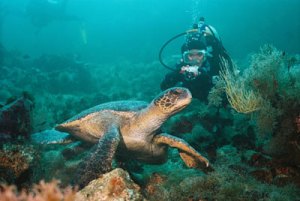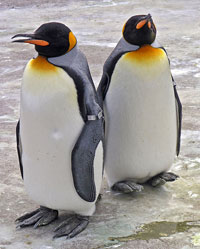The Galapagos Islands are more than just a glorious paradise; they are also a prime location for bird watchers who visit from all over the world. With more than fifty-eight species of birds, you can have the vacation of a lifetime and spot many rare species. Look out the window or tour the uninhabited islands; either way, you will see your winged friends in all their glory.
The Galapagos Islands are a nature lover’s dream, with species of birds, reptiles, and other wildlife that cannot be found anywhere else on Earth. Twenty-eight of the bird species inhabiting the Islands are endemic, or native, and can only be found here. The remaining thirty are migratory birds that come to escape the Northern Hemisphere’s winters. Bird watchers can spot the large cactus finch, the mangrove finch, the flightless cormorant, the Galapagos penguin, the waved albatross, the red-billed tropicbird, the dark-billed cuckoo, and much much more.
To experience the magnitude of the offerings of the Galapagos Islands, galapagos cruise bird watchers should take the time to visit two top spots: Isla Espanola and Isla Genovesa. Isla Espanola is the oldest island in the chain and features a dazzling array of endemic wildlife. Between the months of March and December, you should be able to spot the incredible waved albatross. Other birds include the Galapagos Dove, the Hood Mockingbird, the Large-Billed Flycatcher, the Galapagos Hawk, the Swallow-Talked Gull, and other beautiful species. As a bonus, during these months, you can also see Green Sea Turtles mating on the shore or visit the sea lion colony.
Isla Genovesa is a very small island with no real tourist attractions – unless you’re a bird watcher. Then the attractions are endless. You should be able to spot colonies of Red-Footed Boobies, Frigatebirds, Red-Billed Tropicbirds, Masked Boobies, Storm Petrels, and Swallow-Tailed Gulls. You may also spot the Galapagos Dove and short-eared owls. Isla Genovesa is one of the best sites for bird watching in the world.
Because much of their home is uninhabited by humans, the birds of the Galapagos Islands do not have much fear of humans. Therefore, you can tread lightly and walk among them. This is a rare treat for bird lovers and one that you will remember forever. Bring your binoculars and camera, but remember to take time to just stop and watch these winged marvels.




 Meet Lonesome George, a pitch-perfect example of this trend, Estimated to be somewhere in his 70s, and the last remaining giant tortoise of the
Meet Lonesome George, a pitch-perfect example of this trend, Estimated to be somewhere in his 70s, and the last remaining giant tortoise of the  The elusive Darwin Lab of the Galapagos, like many of the animal species it studies and strives to maintain, is in danger of extinction. Claiming the title of the world’s first heritage site, it is hard to imagine that such and emblem of conservation is, itself, no more safe from the corroding affects of tourism as the islands’ infamous giant tortoises.
The elusive Darwin Lab of the Galapagos, like many of the animal species it studies and strives to maintain, is in danger of extinction. Claiming the title of the world’s first heritage site, it is hard to imagine that such and emblem of conservation is, itself, no more safe from the corroding affects of tourism as the islands’ infamous giant tortoises.